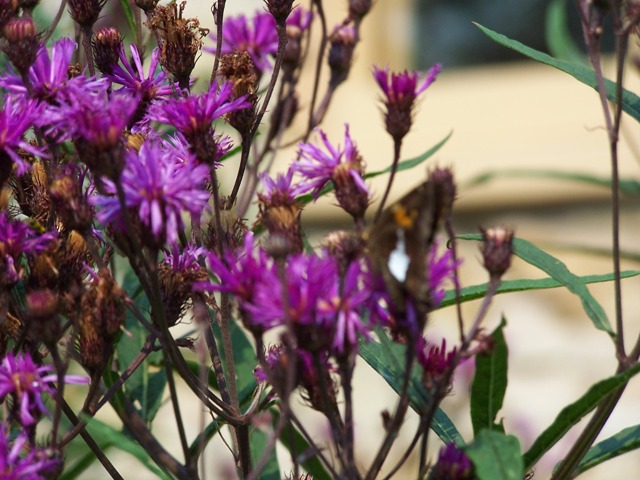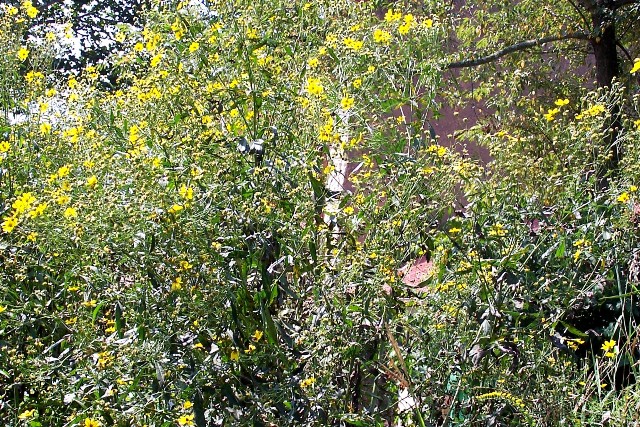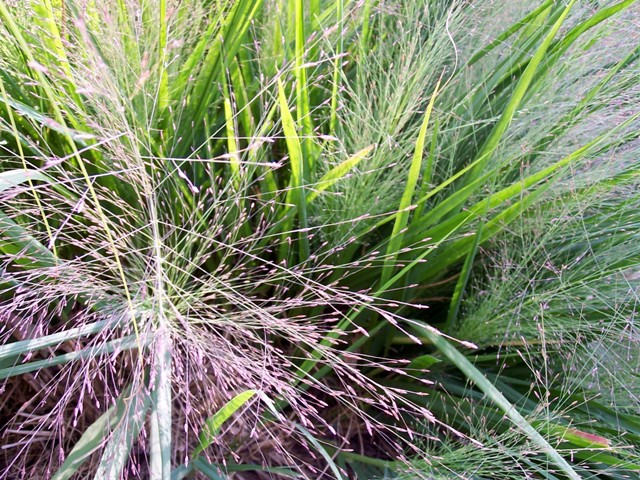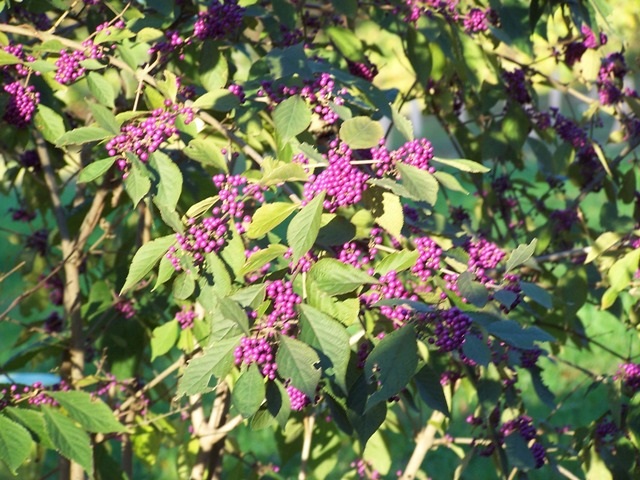Text and photos © Catherine Renzi
Many September gardens are waning, preparing for dormancy after festive summer partying with exciting colors and fragrances. But, September is also a time of new beginnings; Autumn begins in September, and a new academic year begins for students of all ages. For me, each year begins anew with my September birthday.
Goldfinches are more visible and active even while the number of Swallowtails and other butterflies is in decline. Honeybees are busy gathering nectar and pollen, especially from Asters and Goldenrods, to fill their hives with plenty of food for winter. Migrating songbirds are loading up on berries and seeds, preparing for a long trip, much like marathoners might plan carbo-loading before a big race.
Birds, butterflies, and bees in my September garden strongly favor Ironweed (Vernonia glauca and Vernonia novaboracensis). The Goldfinches are crazy about the Tall Coreopsis (Coreopsis tripteris) [above]. For some reason, they choose these seeds even more often than the perennial sunflower seeds (Heliopsis spp. and Helianthus spp.) that are similarly abundant.
Both the Ironweed and Coreopsis might flop and bend a bit, especially when the plants are young and/or the weather is wet. But, the established plants in decent soils go without staking or propping. Some of you might remember my spring post on this blog regarding my fondness for purple and yellow combinations in the garden. Without specific intention to revisit color themes, but rather to simply notice what is working best now, I am back to another purple and yellow pairing.
Thinking purple, I can’t forget Purple Love Grass (Eragrostis spectabilis). Its glowing seedheads glimmer in the morning sun at just 18-24 inches in height. The color is a sparkly jewel tone, almost amethyst, and the nice compact habit makes it suitable to fill in borders in front of the leggier wildflowers such as Ironweed.
If you have room for a shrub nearby, try to add Beautyberry (Callicarpa spp.). As the fruit sets now, the berries’ hue will enhance and intensify the shimmer in the Purple Love Grass and accentuate the Ironweed flowers. Most Beautyberry shrubs hold their fruit until well after frost. I often see Mockingbirds picking the frozen purple fruit in December and even January. I don’t eat Beautyberry fruit, but I smile in thinking it is the birds’ version of a delicious ice wine made from grapes after frost.





